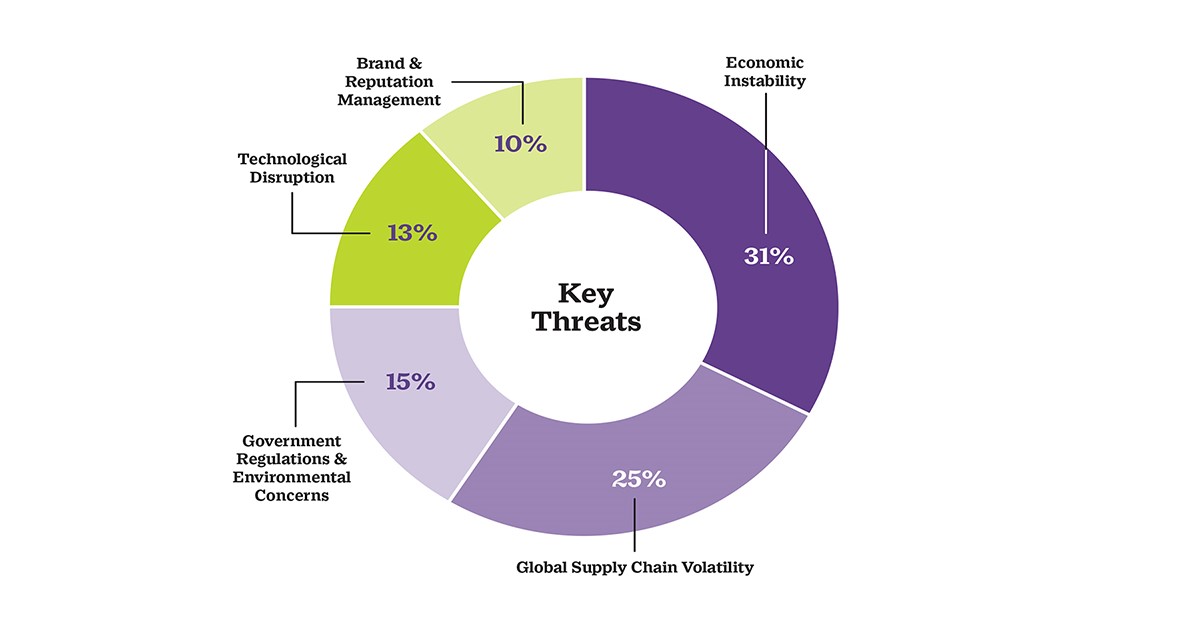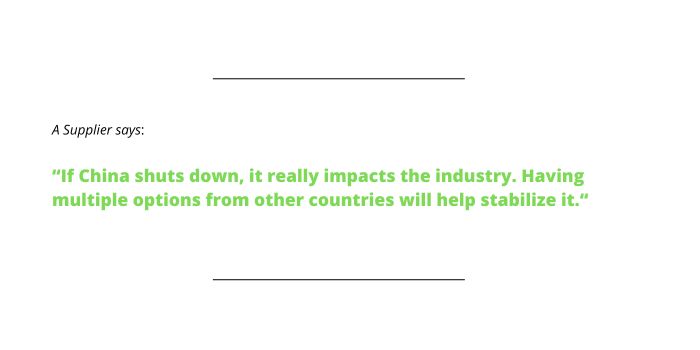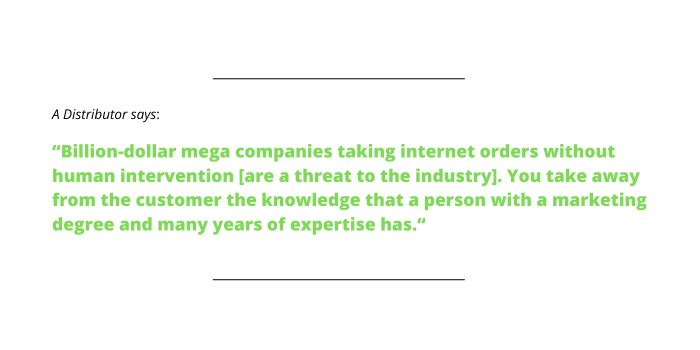Outlook 2024: 5 Threats To Take Seriously

Editor's Note: In a survey of distributors and suppliers in the fall, PPAI Research sought their perspectives on the present and future of the promotional products industry. PPAI Research used this data to produce a SWOT – strengths, weaknesses, opportunities and threats – analysis of the industry to get a better idea of where it's heading in the next three to five years.
In Outlook 2024, promotional products professionals have identified the most daunting potential threats facing the industry. Any industry firm should take care to protect against these in order to keep growing and thriving.
While a few of the threats have long existed in one form or another, most of them represent uncharted territory, meaning how the industry at large reacts to their growing presence will likely have an impact on the future.
Here are the threats most commonly outlined:
31% | Economic Instability
One word is the first out of the mouths of many distributors and suppliers when it comes to industry threats: “economy.”
One supplier points out that what you read on the front page of a newspaper has a strong possibility of affecting the promo industry. “World crisis and financial hardship [are threats], as promotional items are the first to go away in budgets.”
Poor economic conditions can also cause companies, including those in the promo space, to abandon or pivot away from plans and goals. As one supplier says, “A recession can lead to a lack of commitment to quality over quantity and sustainable brands.”
In a PPAI Media special report from 2023, one financial expert referred to companies trying to ward off “the recession that refuses to be.” The economy is something that no company in promo can have any control over, but Alok Bhat, PPAI market economist and senior research manager, emphasizes that firms are not powerless. “In the face of economic instability, the promotional products industry must not just endure but innovate," Bhat says. "Our resilience lies in our ability to adapt, turning challenges into opportunities for growth. Embracing change and diversifying our approach will be key to thriving in an unpredictable market."

25% | Global Supply Chain Volatility
Most in the industry remember the supply chain nightmares that followed 2020’s period of lockdown. Enormous lags in delivery, unpredictably and missed deadlines became the norm. While we’re well past that moment in time, the global supply chain has still proved precarious, and the world is anything but stable as things stand.
This is a big concern for distributors and suppliers according to the survey, with one distributor pointing out that supply chain pricing changes make it difficult for smaller distributors to compete with their larger counterparts.
Much of this concern comes back to a perceived overreliance on China and America’s tenuous relationship with the other global superpower. “Any Far East conflict, and things could get interesting,” one distributor noted.
Human rights issues, China’s handling of things like COVID-19 and geopolitical relationships all point toward understandable concern.
“If China shuts down, it really impacts the industry,” one supplier says. “We need distributors to understand having multiple options from other countries will help stabilize it.”
Shrewd suppliers and distributors are always looking to fortify logistics strategies. Bhat says, "In this ever-evolving landscape, agility and strategic partnerships become crucial for maintaining a steady flow of quality products to our clients.”
15% | Government Regulations & Environmental Concerns
While many suppliers and distributors see sustainability efforts as a meaningful pursuit, just as many see government regulation as a constant threat to the industry and to individual companies. Indeed, newly implemented taxes, labor laws, compliance enforcement and tariffs all can create enormous disruption and inconvenience to specific companies.
In many cases, there is little to be done by way of prevention, so education and reaction can be a means for survival. PPAI’s Product Responsibility Summit is a crucial industry event for understanding constantly evolving compliance requirements.
Action is not futile, however. Every year, PPAI organizes Legislative Education and Action Day (L.E.A.D.) in which the Association coordinates in-person sit-downs between industry leaders and legislators on Capitol Hill. The participants spend the day in a series of meetings designed to make connections and educate lawmakers on the promotional merchandise industry.
13% | Technological Disruption
We often hear about what emerging technologies can do for business and that the real problems are those who refuse to adapt to them. And yes, in the aggregate and over time, technological innovation helps the growth of just about any industry that accomplishes something meaningful.
But lost in that conversation is a lot of trial and error and disruption, which, despite the Silicon Valley perspective, can actually be quite negative. New technology can be too expensive for small companies. It can also come with a lot of errors in the early stages, when overzealous adopters put too much stock in its effectiveness.
“Billion-dollar mega companies taking internet orders without human intervention [are a threat to the industry],” says one distributor. “In the process, you take away from the customer the personal knowledge that a person with a marketing degree and many years of expertise has.”

10% | Brand & Reputation Management
Suppliers and distributors listed sustainability measures as an opportunity for growth in the industry. The flipside of that dynamic is the damage that disposable items could do to the reputation of promotional products.
One distributor pointed out that the “brandfill” reputation that promo has received in the past is a detriment to all promo companies, regardless of their track records in sustainability. Another distributor referred to it as “environmental degradation by way of overconsumption.”
If this is the language used within the industry, one can imagine how harsh it is or could become from those looking at it from the outside.

